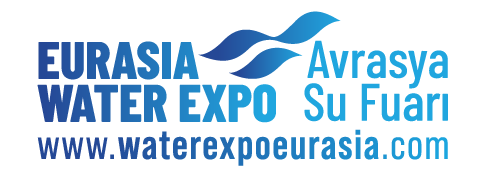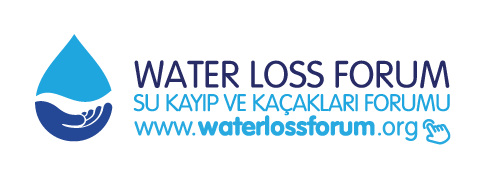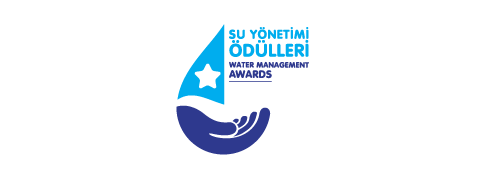Trenchless Technologies
Cleaning
CLEANING IN INFRASTRUCTURE LINES
Cleaning of wastewater channels is one of the main responsibilities of water and sewage utilities. In North Rhine-Westphalia, Germany, 40,000 km of channels are cleaned annually, at a cost exceeding 50 million euros. In Istanbul, cleaning the city’s extensive network of more than 10,000 km of concrete pipe sewage lines involves a significant annual expense. The cost per kilometer for cleaning in Germany is approximately 1,250 euros.
When water flow is reduced, it becomes more difficult to transport solid objects and waste through the channels. This results in the accumulation of sludge, mud, and debris. To avoid additional costs, it is crucial to perform regular cleaning. Due to the dark environment inside the channels, it can be difficult to detect the amount or degree of accumulation, making post-cleaning inspections essential. However, these checks are often neglected due to financial
1. Overview of Channel Cleaning
Public Satisfaction and Water Protection
 Solid objects, sludge, and mud in the channels threaten the functionality of sewage systems. In some cases, these obstructions may cause blockages. If channels become blocked and wastewater cannot flow, cleaning becomes essential. Even if water continues to flow, cleaning is often necessary, as heavily polluted water slows its flow rate and reduces the capacity to carry solid waste. Biological waste and sulfur formation may also occur in some channels. Excessive sulfur can lead to odors, which cause significant discomfort to the surrounding area.
Solid objects, sludge, and mud in the channels threaten the functionality of sewage systems. In some cases, these obstructions may cause blockages. If channels become blocked and wastewater cannot flow, cleaning becomes essential. Even if water continues to flow, cleaning is often necessary, as heavily polluted water slows its flow rate and reduces the capacity to carry solid waste. Biological waste and sulfur formation may also occur in some channels. Excessive sulfur can lead to odors, which cause significant discomfort to the surrounding area.
2. Obligations of Operations
A primary responsibility of local governments is channel cleaning. Regular inspections are essential to minimize potential damage and negative impacts associated with wastewater transportation. The more frequently channels are inspected and cleaned, the quicker potential risks can be addressed.
3. Channel Cleaning
Cleaning activities include inspection, cleaning, measurement, camera inspections, documentation, and removal of sludge, with the use of pumps, nozzles, and vacuum equipment, among other tools. The following activities are involved:• Inspection: Executing measures, control, and density measurements using cameras or robots.
- Hydraulics: Reducing narrowing in channels, pollution on channel walls, solidification, and turbulence.
- Modernization and Regulation: Works on manholes, gratings, connections, and waste removal.
- Other Tasks: Preventing odors, ventilation, and rodent control inside the channels.

4. Planning and Organization
4.1. Cleaning Strategy
The goal of the cleaning strategy is to protect water, ensure public satisfaction, and minimize operational costs. Wastewater utilities either perform cleaning with their own staff or outsource it to contractors, followed by quality control. A cost-effective and efficient cleaning strategy requires the identification of local conditions and the development of tailored approaches for each network.
Key considerations when developing a cleaning strategy:
- Network conditions: Evaluate operational and technical conditions.
- Use of operational experience: Leverage past experience in inspections and repairs.
- Quality controls: Optical or camera-based inspections.
- Budget, personnel, and equipment: Plan based on available resources.
4.2. Evaluation of Sediment
The evaluation of sediments enhances the operational experience. A skilled worker can evaluate the type and content of sediment during cleaning, providing important insights. Key factors to observe include the level of contamination prior to cleaning and any changes in the color of water during the process.
4.3. Systematic Collection of Company Experiences
Experiences inform cleaning priorities. Previous experiences help predict sediment accumulation without incurring additional costs. A cleaning plan can categorize pollution into low, medium, or high levels.
4.4. Inspection Measures
It is possible to inspect the contamination in a shaft using traditional methods like mirrors or more advanced methods like Zoom-Shaft cameras. TV-based inspections with high-pressure nozzles can provide real-time visual feedback on sediment.
4.5. Cleaning Plan
A cleaning plan should clearly outline the method and duration for cleaning a given network segment, taking into account factors such as the channel’s structure and potential obstructions. High-priority areas, such as densely populated regions, should be addressed first.
5. Cleaning Efficiency
Cleaning efficiency is influenced by the network’s condition and established cleaning objectives. The main factors that affect efficiency include:
- Cleaning goal: Achieving complete cleaning of the channel walls may require multiple cleaning phases.
- Sediment type and quantity: The hardness of sediment impacts its ease of removal.
- Channel condition: Larger channels may require more time and resources to clean.
- Local conditions: Difficult working conditions can hinder the cleaning process.
5.1. Factors Affecting Cleaning Efficiency
The tools and equipment used, employee motivation and training, and the network’s condition can all impact cleaning efficiency. Regular training is recommended for new workers, and when cleaning tasks are outsourced, the qualifications of the staff should be carefully considered.
6. Writing the Cleaning Plan
After discussing with staff, the cleaning plan is written, taking into account all operational factors and preparing the necessary resources. A documented report of the cleaning activities should include details such as the amount of pollution removed, stages of cleaning, and safety precautions.
7. Conclusion
If cleaning contracts are awarded to private companies, it is crucial that waste management information reaches the employer. Cleaning plans and effectiveness should be clearly documented. Control over the success of cleaning is often overlooked due to financial limitations, but failure to assess cleaning outcomes results in missed opportunities for improvement.
A cleaning plan should include:
- Type of cleaning and channels involved.
- Shaft locations and accessibility.
- Duration of cleaning.
- Use of cleaning water.
- Disposal of waste.
- Equipment and personnel needs.
- Safety measures and responsibilities.
The Turkish Society for Infrastructure and Trenchless Technologies is committed to advancing construction methods and infrastructure systems. Through national and international collaboration, the association seeks to provide optimal solutions to manufacturers, users, and researchers alike.




